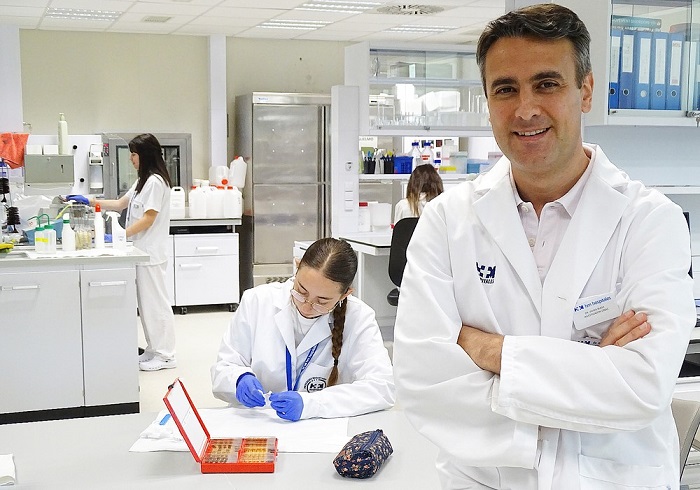
24-05-2024
From neuronal vulnerability to gene therapy in Parkinson´s disease – The role of focused ultrasound
Javier Blesa. HMCINAC. Hospital Universitario HM Puerta del Sur, Madrid
Bio: Javier Blesa was graduated in Biochemistry and Biology at the University of Navarra, Spain. He obtained a PhD in Neurosciences from the Center for Applied Medical Research (CIMA) under the expert guidance of Dr. Jose A. Obeso and Dr. Maria Rodriguez-Oroz. During his PhD he joined Dr. Thomas Wichmann lab (Emory University, Atlanta) and Dr. Oleh Hornykiewicz (Univ. Vienna) lab as well. After obtaining his PhD, he moved to New York to the lab of Dr. Serge Przedborski at Columbia University (2011). In 2015 he joined the lab of Dr. Paul Greengard (2000 Nobel Prize in Physiology or Medicine) at Rockefeller University in New York until he moved back to Spain to join the new Centre for Integrative Research in Madrid as a Research Scientist. Currently he is a Miguel Servet Researcher form ISCIII at CINAC. He is member of the Editorial Board of Neurobiology and Disease and Frontiers of Neuroanatomy and ad hoc reviewer of top neuroscience journals. He is author or co-author of more than 60 publications in the field of Parkinson’s disease including top journals like Nature Reviews Neuroscience, Nature Neuroscience, Nature Communications, Neuron, Science Advances. He has served as expert evaluator for the European Commission, the French National Research Agency (FRA), the Dutch Research Council (NOW), the Luxembourg National Research Fund (FNR), Cure Parkinson’s and other national public and private entities. In the last years he has been honored to receive the "Marie Sklodowska-Curie Actions Seal of Excellence" and "The Alpha&Omega Prize" for young researchers, and different funding from public and private institutions.
Summary: Intracerebral vector delivery in nonhuman primates has been a major challenge. We have recently report successful blood-brain barrier opening and focal delivery of adeno-associated virus serotype 9 vectors into brain regions involved in Parkinson's disease using low-intensity focus ultrasound in adult macaque monkeys. In these monkeys and in a few Parksindon Disease patients, blood-brain barrier opening was followed by 18F-Choline uptake in the putamen and midbrain regions based on positron emission tomography. Altogether, this indicates focal and cellular binding of molecules that otherwise would not enter the brain parenchyma. The less-invasive nature of this methodology could facilitate focal viral vector delivery for gene therapy and might allow early and repeated interventions to treat neurodegenerative disorders in the future.
Lugar: Aula 7
Fecha y hora: viernes 24 de mayo, 13 horas
“Seminario patrocinado en la III Convocatoria de Proyectos Docentes y Culturales sobre Liderazgo y Humanismo Cívico de la Fundación Tatiana"